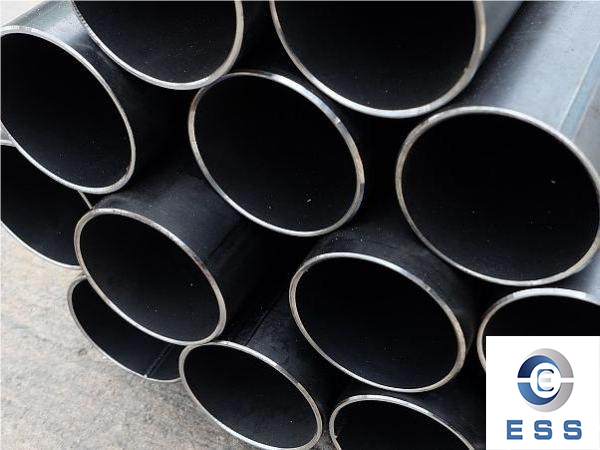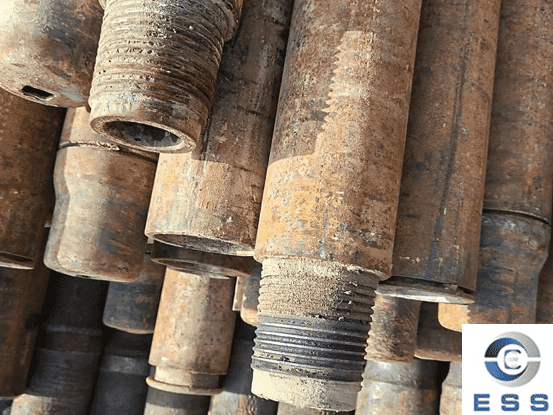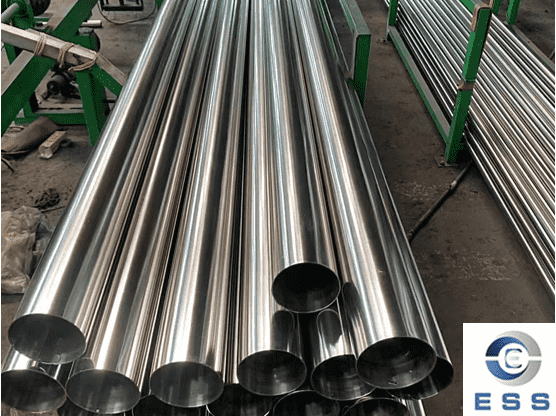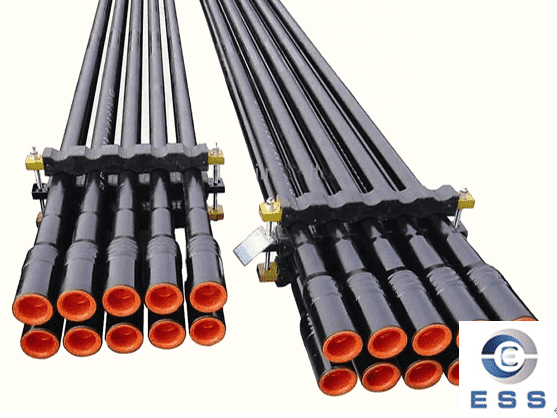Seamless carbon steel pipes play a pivotal role in various industries, serving as essential components for transporting fluids and gases. These pipes are known for their durability, strength, and resistance to corrosion, making them a preferred choice for critical applications. One crucial aspect that ensures the proper functioning of seamless carbon steel pipes is adhering to size standards. In this comprehensive article, we will delve into the standard requirements for seamless carbon steel pipe sizes, exploring the importance of adherence, the governing bodies, and the specifications that define these standards.

1. The Significance of Standard Pipe Sizes:
1.1 Efficiency and Interchangeability:
Standardized pipe sizes are essential for achieving efficiency and interchangeability in various industries. Having a set of standard dimensions allows manufacturers to produce pipes that fit seamlessly into existing systems, facilitating easy maintenance, repairs, and replacements. This uniformity is critical for ensuring the smooth flow of fluids and gases through pipelines without encountering compatibility issues.
1.2 Safety and Reliability:
In industries where seamless carbon steel pipes are extensively used, safety and reliability are paramount. Deviating from standard sizes could compromise the structural integrity of the pipelines, leading to leaks, failures, and potentially hazardous situations. Standardized dimensions ensure that pipes meet specific strength and load-bearing criteria, contributing to the overall safety and reliability of the infrastructure.
1.3 International Consistency:
The global nature of many industries necessitates international consistency in pipe sizes. Standardization allows seamless integration of components from different manufacturers and ensures uniformity in design and construction practices worldwide. This harmonization is particularly crucial in industries such as oil and gas, where pipelines often traverse international boundaries.
2. Governing Bodies and Organizations:
2.1 American National Standards Institute (ANSI):
In the United States, the American National Standards Institute (ANSI) plays a key role in developing and maintaining standards for various industries. ANSI oversees the development of standards for seamless carbon steel pipes, including size requirements. ANSI pipe sizes are widely adopted in the United States and, in many cases, serve as a basis for international standards.
2.2 International Organization for Standardization (ISO):
The International Organization for Standardization (ISO) is a global body that develops and publishes international standards. ISO standards are instrumental in ensuring consistency and compatibility on a global scale. ISO 4200 provides standard dimensions for seamless steel pipes, establishing a common framework that facilitates international trade and cooperation in the industry.
2.3 American Society for Testing and Materials (ASTM):
The American Society for Testing and Materials (ASTM) is another influential organization in the standardization of seamless carbon steel pipes. ASTM develops and publishes standards that cover a wide range of materials, including steel. ASTM A106/A106M, for example, specifies the standard requirements for seamless carbon steel pipe for high-temperature service.
3. Key Specifications for Seamless Carbon Steel Pipe Sizes:
3.1 Nominal Pipe Size (NPS):
Nominal Pipe Size (NPS) is a fundamental dimension that serves as the starting point for defining seamless carbon steel pipe sizes. NPS is a North American standard that provides a nominal reference for pipe sizes based on inches. It is important to note that NPS does not represent the exact dimensions of the pipe but rather serves as a label for identifying different sizes.
3.2 Schedule (Wall Thickness):
Seamless carbon steel pipes come in various schedules, which denote the wall thickness of the pipes. The schedule is crucial for ensuring that pipes can withstand the internal pressure and external loads they may encounter during operation. Common schedules include Sch 10, Sch 20, Sch 40, Sch 80, and Sch 160, with each representing a specific wall thickness.
3.3 Outside Diameter (OD):
The Outside Diameter (OD) is a critical dimension that specifies the actual size of the seamless carbon steel pipe. It is measured in inches or millimeters and is a key factor in determining the compatibility of pipes with fittings and other components. The OD, combined with the wall thickness (schedule), defines the nominal pipe size.
3.4 Tolerance and Variations:
Standard specifications provide tolerances and variations for seamless carbon steel pipes to ensure manufacturing consistency and product quality. Tolerances may include variations in wall thickness, OD, and length. Manufacturers must adhere to these tolerances to produce pipes that meet the specified standards and provide the required performance.
4. Common Seamless Carbon Steel Pipe Grades:
4.1 ASTM A106:
ASTM A106/A106M is a widely used specification for seamless carbon steel pipe intended for high-temperature service. It covers seamless carbon steel pipes suitable for bending, flanging, and similar forming operations. A106 pipes are available in three grades: A, B, and C, with varying mechanical properties and chemical compositions.
4.2 ASTM A53:
ASTM A53/A53M is another important specification for seamless carbon steel pipes. It covers pipes suitable for welding, threading, and flanging. A53 pipes are available in two grades: A and B. Grade A is suitable for hot-dipped galvanizing, while Grade B is intended for use in mechanical and pressure applications.
4.3 API 5L:
The American Petroleum Institute (API) develops standards for the oil and gas industry, including the API 5L specification for seamless carbon steel pipes. API 5L pipes are widely used in conveying gas, water, and oil in both the oil and natural gas industries. Different grades, such as API 5L Grade B and X52, cater to specific application requirements.
5. Challenges and Considerations:
5.1 Non-Destructive Testing (NDT):
Ensuring the quality and integrity of seamless carbon steel pipes involves non-destructive testing methods. NDT techniques, such as ultrasonic testing, radiographic testing, and magnetic particle testing, are employed to detect defects, cracks, or other imperfections that could compromise the performance of the pipes.
5.2 Heat Treatment:
The heat treatment process is crucial in enhancing the mechanical properties of seamless carbon steel pipes. Heat treatment methods, such as normalizing, quenching, and tempering, are applied to achieve the desired hardness, strength, and toughness. Adherence to specified heat treatment parameters is essential to meet standard requirements.
5.3 Material Traceability:
Traceability of materials is a key consideration in the manufacturing of seamless carbon steel pipes. Manufacturers must maintain records that allow the tracing of raw materials back to their source. This ensures that the materials used in the production of pipes meet the specified chemical composition and quality standards.
6. Conclusion:
In conclusion, seamless carbon steel pipe size standard requirements are of paramount importance in ensuring the efficiency, safety, and reliability of pipelines in various industries. Adherence to these standards, governed by organizations such as ANSI, ISO, and ASTM, provides a framework for manufacturing pipes that meet specific dimensional, mechanical, and chemical specifications.
Understanding the key dimensions, such as Nominal Pipe Size (NPS), schedule, and outside diameter (OD), is essential for selecting and using seamless carbon steel pipes in diverse applications. Common specifications, including ASTM A106, ASTM A53, and API 5L, define the characteristics of these pipes and guide manufacturers in meeting the requirements of different industries.
Challenges such as non-destructive testing, heat treatment, and material traceability underscore the need for stringent quality control measures in the production of seamless carbon steel pipes. By addressing these challenges and adhering to standard requirements, manufacturers contribute to the overall integrity and functionality of pipelines that form the backbone of critical infrastructure worldwide.













 Eastern Steel Manufacturing Co.,Ltd not only improve product production and sales services, but also provide additional value-added services. As long as you need, we can complete your specific needs together.
Eastern Steel Manufacturing Co.,Ltd not only improve product production and sales services, but also provide additional value-added services. As long as you need, we can complete your specific needs together.










